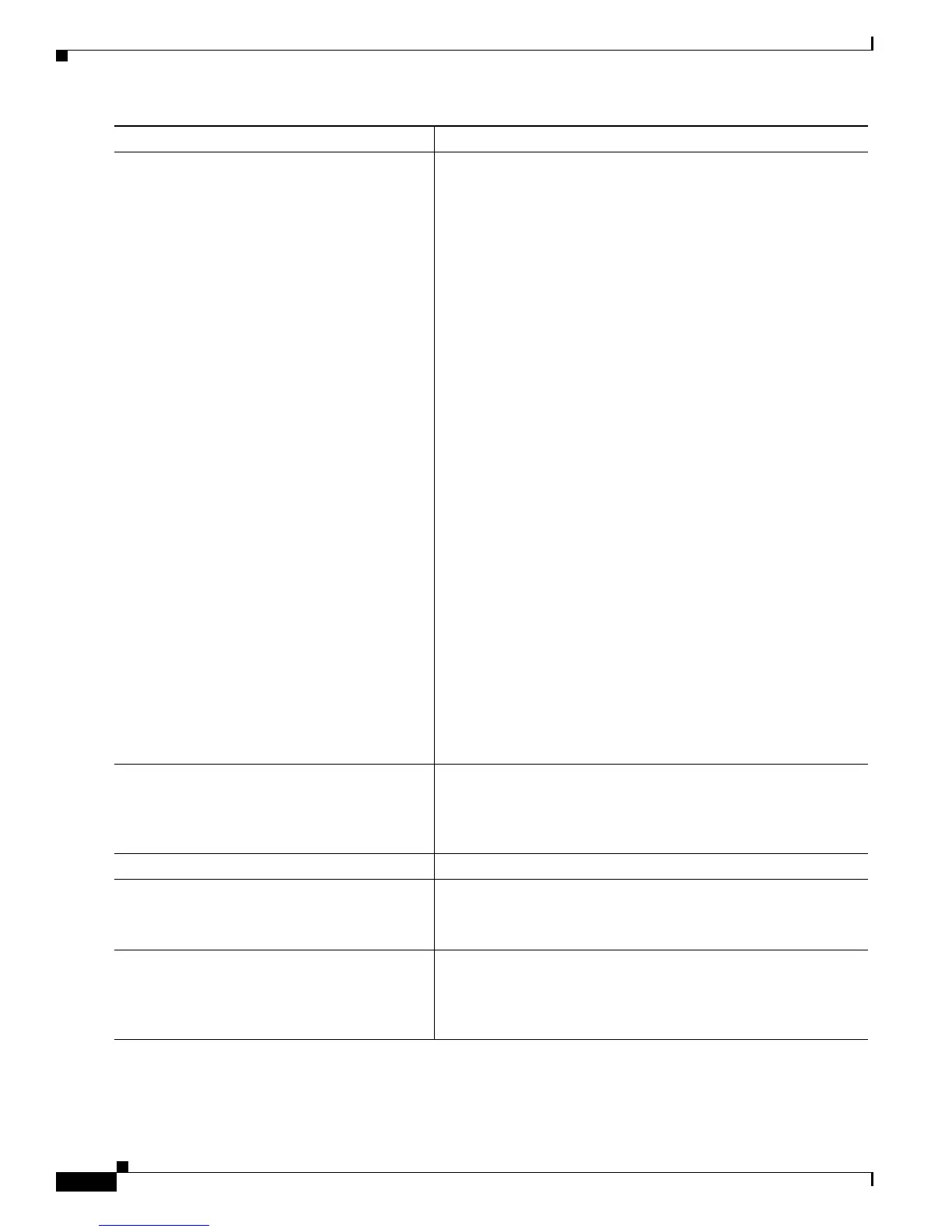17-48
Cisco 10000 Series Router Quality of Service Configuration Guide
OL-7433-09
Chapter 17 Configuring Dynamic Subscriber Services
Shaping and Queuing Per-Session Traffic on LNS
Step 7
Router(config-pmap-c)# shape rate account
{{{qinq | dot1q} {aal5 | aal3}
{subscriber-encapsulation}} |
{user-defined offset [atm]}}
Shapes traffic to the indicated bit rate and enables ATM overhead
accounting.
rate is the bit-rate used to shape the traffic, expressed in kilobits
per second.
account enables ATM overhead accounting. For more
information, see
Chapter 10, “Overhead Accounting.”
qinq specifies queue-in-queue encapsulation as the broadband
aggregation system-DSLAM encapsulation type.
dot1q specifies IEEE 802.1Q VLAN encapsulation as the
broadband aggregation system-DSLAM encapsulation type.
aal5 specifies the ATM Adaptation Layer 5 that supports
connection-oriented variable bit rate (VBR) services. You must
specify either aal5 or aal3.
aal3 specifies the ATM Adaptation Layer 5 that supports both
connectionless and connection-oriented links. You must specify
either aal3 or aal5.
subscriber-encapsulation specifies the encapsulation type at the
subscriber line.
user-defined indicates that the router is to use the offset you
specify when calculating ATM overhead.
offset specifies the offset size the router is to use when calculating
ATM overhead. Valid values are from -63 to 63 bytes.
Note The router configures the offset size if you do not specify
the user-defined offset option.
atm applies ATM cell tax in the ATM overhead calculation.
Note Configuring both the offset and atm options adjusts the
packet size to the offset size and then adds ATM cell tax.
Step 8
Router(config-pmap-c)# service-policy
policy-map-name
Applies a bottom-level child policy to the top-level parent
class-default class.
policy-map-name is the name of the previously configured child
policy map.
Step 9
Router(config-pmap-c)# exit
Exits policy-map class configuration mode.
Step 10
Router(config)# interface
virtual-template number
(Optional) Creates a virtual template interface and enters
interface configuration mode.
number identifies the virtual template.
Step 11
Router(config-if)# service-policy
policy-map-name
(Optional) Attaches the parent policy to the virtual template
interface.
policy-map-name is the name of the previously configured parent
policy map.
Command Purpose

